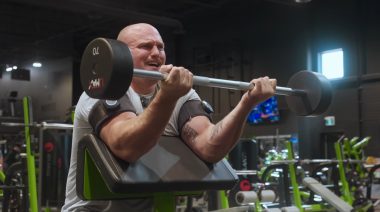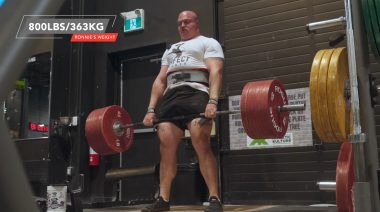Siegmund Klein was a famous all-around old-time strongman. He was well regarded for his physique and posing skills. In addition to being strong with barbells and other weights, he was accomplished at hand balancing and as a muscle-control artist.
Like many strongmen, Klein can provide us with lessons that are still relevant to our modern-day training. If you’re looking for “new” moves, then read on to learn about the “deep knee bend” and the “turning-the-barbell exercise” and see if you can accomplish anything close to what Klein did.
RELATED: 6 Clues to Training Success from Old-time Strongmen
A Strongman Is Born
Born in 1902 in Germany, Klein was always a fit and strong kid. As a young teenager, he became interested in weight lifting through reading physical culture and strength magazines. It’s also said that his father was quite strong and this spurred his interest. In addition to working with weights, Klein studied the methods of Maxick, reading his book, Muscle Control.
“His accomplishments will no doubt stand the test of time and he will always be considered one of the greats in the world of physical culture.”
At a bodyweight of under 150 pounds, Klein’s best military press ever was 221.5lbs. He won the title of Welter-Weight Weight-Champion of America. But far from being just a weight lifter, another of his amazing feats was to perform seventeen tiger bends in a row. If you’re not familiar with the move, a tiger bend involves moving from a forearm stand to a handstand. It requires tremendous shoulder and tricep strength.
Klein performing the tiger bend, an impressive display of shoulder and tricep strength
Klein’s Studio of Physical Culture
Klein married Grace Attila, the daughter Professor Louis Attila who was also a famous strongman and tutor to many others. Klein took over running Attila’s gym for a time before he moved to New York City to open his own.
Klein’s Studio of Physical Culture was one of the most famous of the era. While a relatively small place, measuring thirty by forty feet, it was well stocked for those wishing to become strong. It contained all kinds of shot-loaded barbells, solid iron dumbbells, and kettlebells, plus plenty of open space and a Roman column. (Also adorning the gym was Klein’s collection of over 200 beer steins. He was German after all.)
“At a bodyweight of under 150 pounds, Klein’s best military press ever was 221.5lbs. He won the title of Welter-Weight Weight-Champion of America. But far from being just a weight lifter, another of his amazing feats was to perform seventeen tiger bends in a row.”
One of the more interesting pieces of Klein’s equipment was the Rolandow dumbbell – a 209lb awkward beast that many people struggled to even pick up off the floor. Klein himself succeeded in bent pressing this weight at a body weight of just 147lbs. This was one of his favorite lifts, in fact. It seems he enjoyed all manners of pressing overhead.
RELATED: The History of Weight Sports – How They Evolved Since 1900
Klein ran his own magazine, titled Klein’s Bell, for a period of just over a year. From the September, 1931 issue comes this excerpt regarding his gym, along with the accompanying picture:
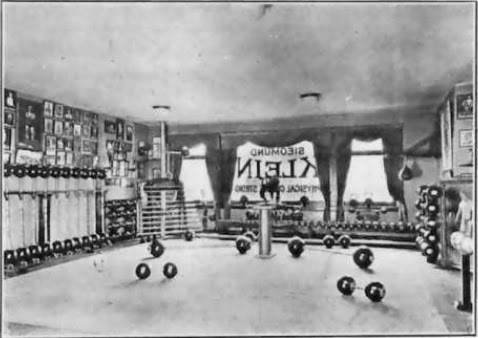
Klein’s Studio – home of some serious heavy lifting
This complete equipped gymnasium is unlike any other in New York. While it lacks the customary paraphernalia of the usual “gym,” it does contain all the necessary apparatus to produce the desired results. Though devoted chiefly to the building up of health and strength for the average man, there is special equipment for those who desire special work for professional purposes.
After Klein’s Bell ceased publication he wrote for many others outlets including Strength and Health, several of Joe Weider’s magazines, and a few instructional booklets.
A Different Way of Training
Let’s take a look at two exercises that you might not be familiar with from Klein’s book, Super Physique. First up his deep knee bend. This is what is now called a squat, but specifically done in the Steinborn Method.
Grasp end of bar-bell with palms facing one. Up-end it on block of wood to the perpendicular. Position of hands must now be changed. The left hand grasps upper end of bar with thumb down, and back of hand as close to sphere or plates as possible; right hand at lower end of bar with thumb up, as shown in Picture 1. Stand flat-footed with feet about twelve inches apart, lower legs in line with bar, Picture 2. Squat as low as possible, rocking bell on to shoulders as shown in Picture 3. Rise to erect position, keeping the feet parallel. Again squat as low as possible, rise to erect position and repeat. To remove bell from shoulders, squat and slowly rock bell on to block as shown in Picture 2. Rise up until bell is again perpendicular and lower to floor. This is the correct method of doing the “Deep-knee-Bend” unassisted, with a very heavy weight.
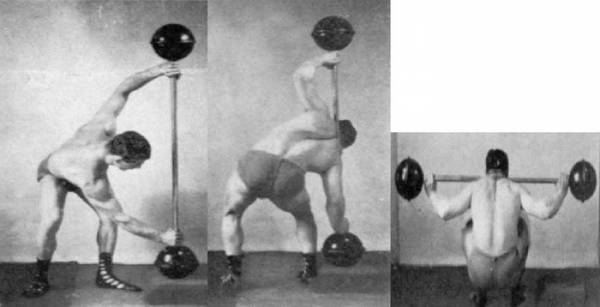
Henry Steinborn, world famous lifter, introduced this style to the American athletes, doing 530 lbs. I have witness him doing 480 lbs. four times in succession. I have done 300 lbs. officially five times in succession.
The next exercise goes unnamed in the book, besides being called “Exercise 12,” but I like to call it the turning-the-barbell exercise, meant to develop the triceps, deltoids, and pectorals.
Hold light bar-bell at the chest as in Picture 1, with feet firmly planted on the floor. Push bell smartly forward and back to chest. Then turn bell to a slight angle as in Picture 2, and push forward smartly again bringing bell back to the chest. Each time the bell goes forward turn to a sharper angle until, in five movements, the bar is perpendicular as shown in Picture 3. Inhale when pushing forward, exhale returning to chest.
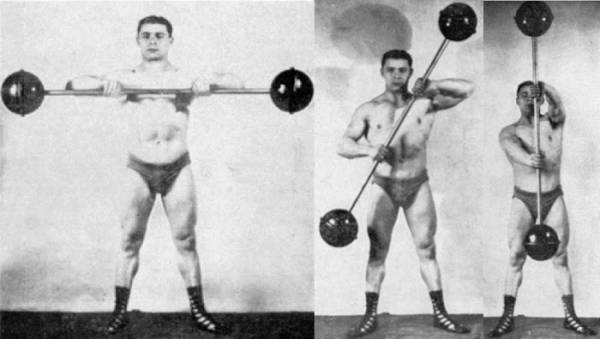
A demonstration of “Exercise 12” – a rotational barbell movement that strengthens the upper body
Some Wise Words of Strength
Here are a few quotations from inside the book that show Klein’s attitude about strength and fitness:
- “Time and money spent in training the body pays a larger dividend than any investment.”
- “The stronger the body the more it obeys, the weaker the body the more it commands.”
- “The glory of a man is his strength.”
- “Strength is first, last, and at all times the ability to do things.”
Sig Klein passed away in 1987. In 2006, he was inducted into Joe Weider’s Bodybuilding Hall of Fame. His accomplishments will no doubt stand the test of time and he will always be considered one of the greats in the world of physical culture.
References:
1. Klein, Siegmund, Super Physique, (Strongman Books, 2012), 23-27, 30-33, 37-38.
2. Klein, Siegmund, Klein’s Bell, September, 1931.
3. “The Great Gyms of Yesteryear,” Bob Whelan, accessed November 19, 2014.
4. “Sigmund Klein, a Man of Two Eras,” USAW, accessed November 19, 2014.

